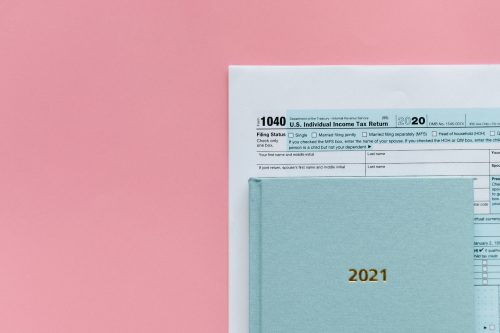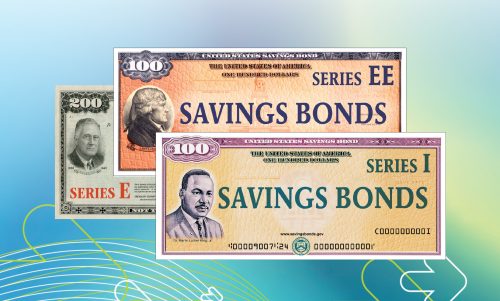- Many people wonder what to do with their 401(k) after leaving a job.
- You have multiple options, including keeping your 401(k) with your former employer, rolling it into a new 401(k) or IRA or cashing it out.
- Each option has its benefits, but some options come with real drawbacks.
U.S. employees change jobs every 4.1 years on average, according to the U.S. Bureau of Labor Statistics. Given the frequency of employment changes, you need to know how changing jobs affects your 401(k).
You worked hard for your retirement savings, so you likely want to ensure that you can not only access the funds in your 401(k) but also grow them. Fortunately, you have many options, including keeping the account with your former employer, rolling your savings into a new 401(k) or IRA or cashing out your account.
Each choice has its benefits, and some options present real drawbacks. Dive into each option to ensure that you make the right decision for your 401(k) after you change jobs.
Option 1: Leave your 401(k) alone
The first option is to leave your retirement savings with your former employer. This is often the easiest path because you don’t have to make significant changes. Most (but not all) employer-sponsored plans allow you to keep your 401(k) account with your former employer even after you leave your job.
Keeping your money in your existing 401(k) plan lets your investments continue to grow. However, you typically need to have a minimum amount in the account. If you don’t, your former employer may close the account out and issue you a check.
Leaving your 401(k) with your former employer does come with a few considerations. While many people have multiple 401(k) accounts, keeping track of retirement savings in various places may seem like a headache. Also, you won’t receive any matching contributions from your former employer, and the fees could be higher than some of your other options.
Option 2: Consolidate your retirement savings to another 401(k)
If you leave one job for another, you may also have the option of moving your retirement savings into your new employer’s 401(k) plan. This is a common choice for many savers who like the simplicity of having their retirement funds all in one place. You can continue to benefit from growing the investment. In addition, your new employer may also provide matching contributions to accelerate your savings.
This option, however, hinges on your new employer providing immediate access to a 401(k) plan. Some employers may not offer the benefit until you’ve been on the job for a specified amount of time, or they may not offer one at all.
If your new job comes with a 401(k) benefit, be sure to review the plan’s investment options and fees. You may prefer leaving your money in your old 401(k) plan if it’s less expensive or you like the investment choices more.
Option 3: Roll your 401(k) over into an IRA
If your new employer doesn’t offer a 401(k) — or you don’t love the plan — consider rolling your retirement savings into an individual retirement account (IRA). IRAs provide a wide range of investment options for retirement savers, along with lower fees than traditional employer-sponsored 401(k) plans.
IRAs also offer various tax benefits that can help you maximize your retirement savings down the road. Traditional IRAs are akin to 401(k) plans in that they allow you to make pretax contributions. The money in the account grows tax-deferred, and you only pay taxes on the funds once you begin taking distributions.
Roth IRAs provide another option. With a Roth IRA, you contribute after-tax dollars. You can then take tax-free distributions once you retire. These accounts make sense if you anticipate that your tax rate will be higher in retirement than it is now. Do note: You can only contribute to a Roth IRA if your Adjusted Gross Income (AGI) is less than $129,000 for an individual or $214,000 for married couples.
Option 4: Take your distributions
Typically, you can’t take penalty-free distributions from an employer-sponsored 401(k) before age 59½. However, the IRS makes an exemption for workers who leave or lose their job at 55. In this scenario, you can begin taking distributions from your retirement account as soon as you depart from your employer.
This rule applies only to your current 401(k) account, not to any other plans that you’ve had from previous employers. For example, if you had a 401(k) from a job you left five years ago and you were laid off from a subsequent job at age 55, you could only take distributions from the most recent retirement plan.
Ideally, you’d let your investments continue to grow for as long as possible. But if the end of your employment is also the start of your retirement, you may need the funds you’ve saved. Talk to your plan administrator before you take any distributions to ensure you understand the rules and that you won’t face a 10% penalty for early withdrawals.
Option 5: Cash out your 401(k) (at your own risk)
A last option is to cash out your 401(k) after you quit your job. While this is a possibility, it’s one that many financial advisors recommend avoiding. That’s because unless you’re 55 or older, you’ll incur a 10% penalty and have to pay income tax on the additional income.
Additionally, you’ll decrease the impact of your retirement savings on your future plans. Not only do you end up losing the money you paid as a penalty, but you may miss out on future growth potential of your investments.
Tips for handling a 401(k) after leaving a job
Leaving or changing jobs is a big transition. Don’t let your 401(k) get lost in the mix. Instead, here are some tips for ensuring you make the best decision regarding your retirement savings:
- Know how much you have in your 401(k) account: The amount you’ve saved will affect the choices available to you. For example, there’s often a minimum balance for keeping a 401(k) with a previous employer. Many 401(k) fund administrators only issue statements quarterly, which means you may have to log into your account to see an accurate depiction of your savings.
- Know your 401(k) vesting schedule: A vesting schedule determines when you have full ownership of the contributions your employer made to your 401(k). Immediate vesting means that 100% of those funds are yours immediately. Other schedules may require you to work for a certain number of years before you own any employer contributions.
- Think about consolidation: Do you already have multiple 401(k) accounts? Are you able to keep track of the ones you have? Consider consolidating accounts to make tracking your retirement savings easier.
- Consider your age: The length of time you have until retirement may also inform your decisions about what to do with a 401(k) after you quit your job. If you’re 55 or older and ready to retire, then you may begin taking penalty-free distributions.
- Look at the bigger picture: As you move through your career, your retirement savings goals may include different types of retirement savings accounts. A Roth IRA may make sense as a way of limiting your tax liability in retirement.
Enlist the help of a financial advisor
It’s easy to be overwhelmed about what to do with your 401(k) after leaving a job. Determining the best choice for you depends on your financial circumstances, life stage and retirement goals.
Consider contacting a financial advisor to help you navigate this transition and make the smartest decision for your future. Start the next chapter of your career without concerns about old retirement accounts weighing you down.










